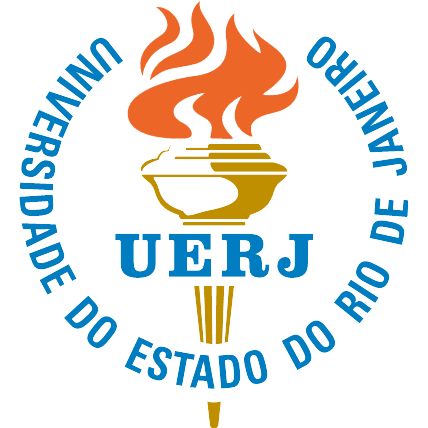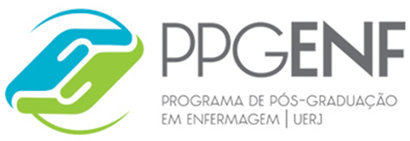Fatores influenciadores na utilização do cateter central de inserção periférica em pacientes adultos [Factors that influence the use of peripherally inserted central catheter in adult patients] [Factores que influencian la utilización del catéter central de inserción periférica en pacientes adultos]
DOI:
https://doi.org/10.12957/reuerj.2017.20976Palavras-chave:
Enfermagem, cateterismo venoso central, cateterismo periférico, adulto.Resumo
Objetivo: identificar os fatores facilitadores e dificultadores para a utilização de cateter central de inserção periférica em pacientes adultos, sob a ótica de enfermeiros capacitados. Metodologia: estudo qualitativo e descritivo realizado com 18 enfermeiros atuantes no Hospital Universitário, de Santa Maria, sul do Brasil. A coleta dos dados ocorreu no período de maio a agosto de 2015, por meio de entrevista semiestruturada. Os dados foram analisados conforme análise temática. Resultados: evidenciaram-se como fatores facilitadores: estímulo da instituição, disponibilidade do cateter e apoio das equipes médica e de enfermagem. Os fatores dificultadores foram: recursos institucionais (carência de enfermeiros capacitados; falta de treinamento da equipe de enfermagem; desconhecimento das equipes médica e de enfermagem; falta de pessoal e sobrecarga de trabalho; indisponibilidade do aparelho de ultrassom; aspectos clínicos (rede venosa difícil); e aspectos individuais (falta de visão do enfermeiro). Conclusões: conhecer estes fatores pode favorecer no estabelecimento de condutas que melhorem a utilização deste cateter.
ABSTRACT
Objective: to identify factors that, from the trained nurse’s point of view, facilitate and complicate use of peripherally inserted central catheter in adult patients. Methodology: in this qualitative, descriptive, exploratory study of 18 nurses at a teaching hospital, data was collected from May to August 2015 by semi-structured interview and treated by thematic analysis. Results: the results showed facilitator factors to be: institutional encouragement, catheter availability, and support from medical and nursing staffs. Complicating factors were institutional resources (lack of nurses, training deficit in nursing staff, knowledge shortfall in medical and nursing staff; staff shortage and overwork; ultrasound machine unavailable; clinical aspects (difficult venous access); and individual aspects (lack of patient perspective). Conclusion: knowing these factors may favor the establishment of conduct to improve use of this catheter.
RESUMEN
Objetivo: identificar factores facilitadores y dificultadores para la utilización de catéter central de inserción periférica en pacientes adultos, bajo la óptica de enfermeros capacitados. Método: estudio cualitativo y descriptivo, realizado junto a 18 enfermeros que trabajan en un hospital universitario, de Santa Maria, Sur de Brasil. La recolección de datos ocurrió de mayo a agosto de 2015, por medio de entrevista semiestructurada. Los datos se analizaron de acuerdo con el análisis temático. Resultados: se destacaron como factores facilitadores: estímulo de la institución, disponibilidad del catéter y apoyo de los equipos médico y de enfermería. Los factores dificultadores fueron: recursos institucionales (carencia de enfermeros capacitados; falta de entrenamiento del equipo de enfermería; desconocimiento de los equipos médico y de enfermería; falta de personal y exceso de carga de trabajo; indisponibilidad de ecógrafo); aspectos clínicos (red venosa difícil); aspectos individuales (falta de visión de enfermero). Conclusión: el conocimiento de estos factores puede favorecer a establecer conductas que mejoren la utilización de este catéter.
DOI: http://dx.doi.org/10.12957/reuerj.2017.20976
Publicado
Como Citar
Edição
Seção
Licença
Ao publicar na Revista Enfermagem UERJ, os autores declaram que o trabalho é de sua exclusiva autoria e assumem, portanto, total responsabilidade pelo seu conteúdo.
Os autores retêm os direitos autorais de seu artigo e concordam em licenciar seu trabalho usando uma Licença Pública Internacional Creative Commons Atribuição (CC BY), aceitando assim os termos e condições desta licença (https://creativecommons.org/licenses/by/4.0/legalcode.en), que permite que o material criado pelo autor pode ser distribuído, copiado e exibido por terceiros. O trabalho original deve ser citado e apresentar um link para o artigo disponível no site da revista em que foi publicado.
Os Direitos Autorais dos artigos publicados na Revista Enfermagem UERJ pertencem ao(s) seu(s) respectivo(s) autor(es), com os direitos de primeira publicação cedidos à Revista Enfermagem UERJ, com o trabalho simultaneamente licenciado sob uma Licença Creative Commons CC BY, a qual permite o compartilhamento do trabalho com reconhecimento da autoria e publicação inicial nesta revista
Os autores concedem à Revista Enfermagem UERJ o direito de primeira publicação, de se identificar como publicadora original do trabalho e concedem à revista uma licença de direitos não exclusivos para utilizar o trabalho das seguintes formas:
- Vender e/ou distribuir o trabalho em cópias impressas e/ou em formato eletrônico;
- Distribuir partes e/ou o trabalho como um todo com o objetivo de promover a revista por meio da internet e outras mídias digitais e impressas;
- Gravar e reproduzir o trabalho em qualquer formato, incluindo mídia digital.
Em consonância com as políticas da revista, a cada artigo publicado será atribuída uma licença Creative Commons Atribuição (CC BY).









